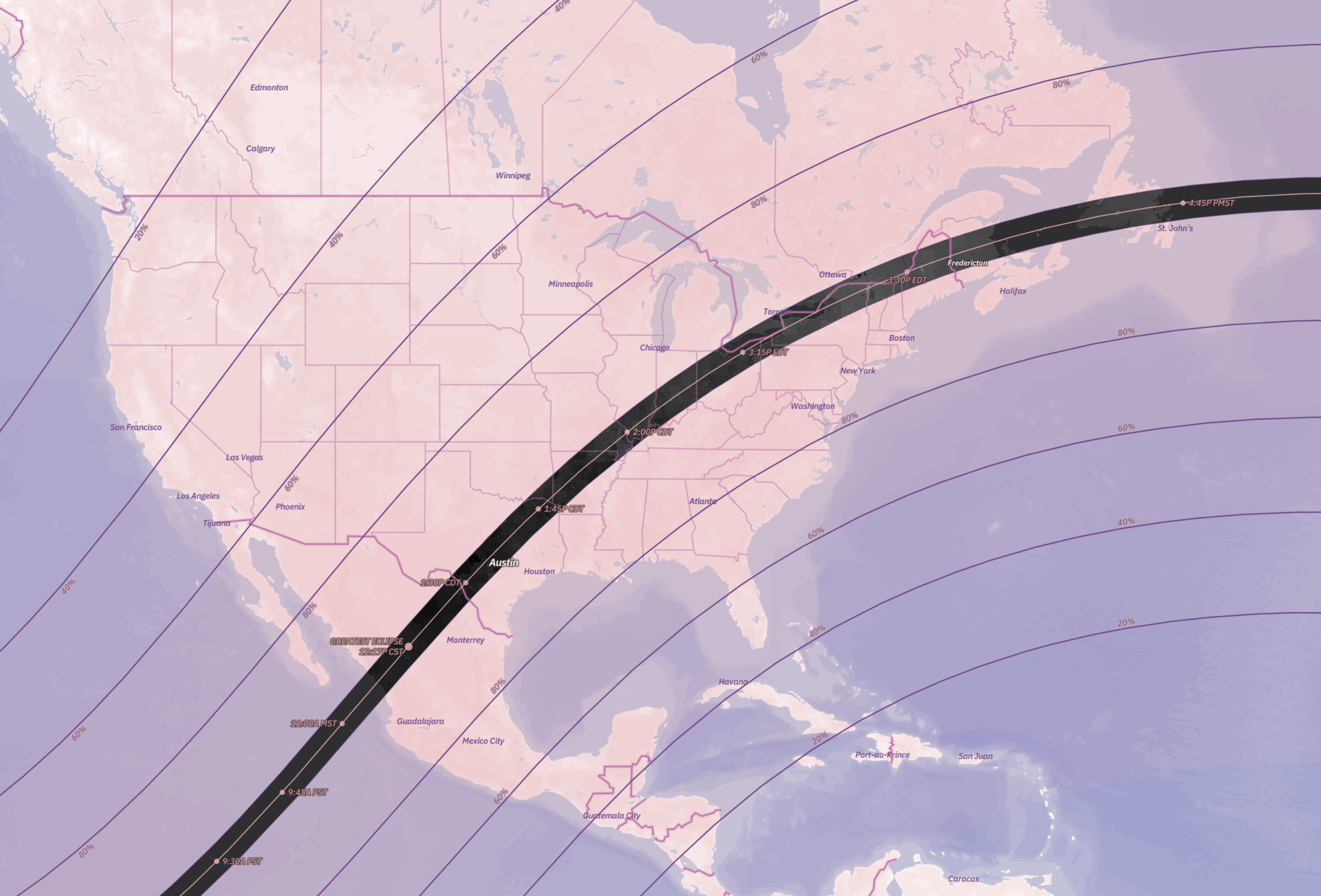Kate Howells • Sep 28, 2023
Why partial eclipses are worth seeing
You don’t need totality for a totally awesome experience
Total solar eclipses generate a lot of excitement, and for good reason. Being in the path of totality is undeniably an amazing experience. But that doesn’t mean it’s the only way to enjoy an eclipse. Witnessing a partial solar eclipse is an awe-inspiring experience as well. And because a partial solar eclipse’s path across the Earth is so much larger than that of a total eclipse, it’s also an experience that’s available to viewers in many more areas.
What is a partial solar eclipse?
The term “partial solar eclipse” describes any time that the Sun is partly obscured by the Moon.
Some solar eclipses are only partial. During a total solar eclipse, areas surrounding the path of totality see a partial eclipse, and even those directly in the path see a partial eclipse as the Moon gradually covers and then moves off of the Sun.

What will you see during a partial solar eclipse?
During a partial eclipse (and with proper eye protection) you’ll see the Moon gradually cross in front of the Sun, making it look like larger and larger bites are being taken out of the Sun’s disk until the eclipse reaches its maximum point. Depending on where you are, a smaller or larger amount of the Sun will be blocked out at the eclipse’s maximum point. Some partial eclipses cover enough of the Sun that it will look like a crescent, much like the crescent Moon that we see regularly each month.
As the Moon continues past the maximum point of the eclipse, you’ll see basically a reversal of what you saw at first, with the obscured part of the Sun getting smaller and smaller until the eclipse is over.
Cool things to look for during a partial eclipse
Crescent shadows
One of the neatest things about a partial solar eclipse is that shadows take on different shapes and qualities than usual.
If you look at the ground beneath a leafy tree, you’ll see that where dappled sunlight comes through the leaves it casts crescent-shaped shadows. This unique phenomenon only happens during partial solar eclipses.
How to safely view a total solar eclipse
To avoid risking permanent eye damage, you need eye protection to watch a solar eclipse. The easiest way to ensure eye safety is using solar eclipse glasses. These should be special glasses that say “ISO 12312-2” on them and are made by a vendor approved by the American Astronomical Society. Otherwise, your glasses don’t meet international safety standards and aren’t fit for solar viewing.
Check out our complete solar eclipse glasses guide to learn more. You can also purchase The Planetary Society’s solar eclipse glasses from AAS-approved vendor American Paper Optics.

If you want to see this effect in an even more pronounced way, you can hold a colander up to the Sun and look at the shadow it casts on the ground. The Sun’s crescent shape will be projected through each hole in the colander.

You can even make the crescent shadow effect happen by holding your hands up to the Sun’s light, overlapping your fingers in a criss-cross pattern.

With all of these shadow effects, it’s easiest to see the crescent shapes if you cast the shadows on a smooth surface like concrete or a large piece of cardboard or paper.
Shadows will also get sharper. Normally, the edges of a shadow under the full Sun are a bit fuzzy because the light our star generates spreads out at an infinite number of angles. But as the Sun gets eclipsed into a crescent, the number of angles of light we’re receiving decreases. This makes the edges of shadows more stark.
Animal reactions
Some animals have been known to behave differently during total solar eclipses, briefly adopting their nighttime behaviors during the period of darkness caused by the Sun’s complete obscuration. Although partial solar eclipses don’t cause the same level of darkness, those partial eclipses where the Sun is more than half-obscured will create dimmer light that can affect some animals’ behavior. You might hear birds stop singing, or crickets chirping.
The change might be mild, but it’s worth paying attention to what kind of animals you can see and hear before the eclipse starts, and notice whether there’s a change once the eclipse reaches its maximum point.
How to safely enjoy a partial solar eclipse
Unlike total solar eclipses, there is no time during a partial eclipse when it’s safe to look directly at the eclipsed Sun. No matter how close the partial eclipse is to being total, you can never look at it without proper eye protection.
Eclipse safety glasses and handheld viewing devices are the most common way to safely observe an eclipse. You can also use a telescope or binoculars that have been fitted with special solar filters.
Are your solar eclipse glasses safe?
A guide to how to make sure your solar eclipse glasses are safe and certified, plus tips on what to do — and what not to do — if you want to experience an eclipse without glasses.
The 2024 partial solar eclipse
On April 8, 2024, a solar eclipse will pass across North America, visible as a total eclipse from some locations. Most of North and Central America will get to see it as a partial eclipse, meaning hundreds of millions of people may get to experience this amazing phenomenon.

Support our core enterprises
Your support powers our mission to explore worlds, find life, and defend Earth. You make all the difference when you make a gift. Give today!
Donate

 Explore Worlds
Explore Worlds Find Life
Find Life Defend Earth
Defend Earth


